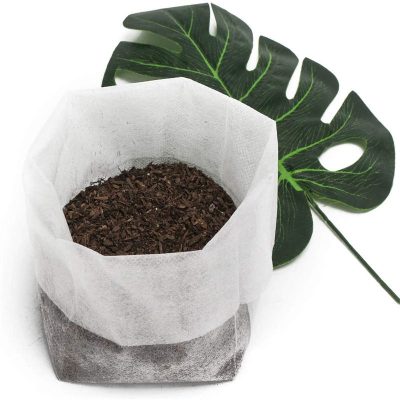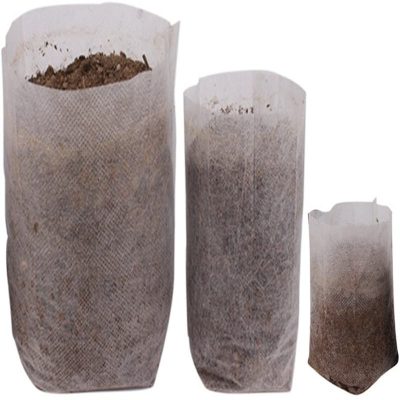Non-woven grow bags have become increasingly popular in gardening and horticulture due to their unique characteristics and benefits. Let’s examine the pros and cons of non-woven grow bags in a comprehensive review:
Pros:
- Breathability: Non-woven grow bags are made of porous materials that allow for excellent airflow. This promotes better aeration and prevents root rot by enabling excess water to drain out, maintaining healthy root systems.
- Root Development: The porous nature of non-woven grow bags allows roots to penetrate the fabric, promoting air pruning. When the roots reach the edges of the bag, they are exposed to air, which causes the tips to dry out and encourages the growth of secondary roots. This process prevents root circling and produces a denser and more fibrous root system.
- Water Retention and Drainage: Non-woven grow bags strike a balance between water retention and drainage. They retain enough moisture for plants to access, but excess water drains out through the porous fabric. This feature helps prevent waterlogged soil, reducing the risk of overwatering and associated issues like root rot.
- Lightweight and Portable: Non-woven grow bags are generally lightweight and easy to move around. This feature is beneficial for gardeners who want to relocate plants to take advantage of sunlight, optimize space, or protect plants from extreme weather conditions.
- Versatility: Non-woven grow bags can be used for a wide range of plants, including vegetables, herbs, flowers, and shrubs. They can be placed on various surfaces such as the ground, concrete, or raised beds. The bags come in different sizes, making them adaptable to different plant sizes and growing spaces.
Cons:
- Durability: Compared to some traditional containers, non-woven grow bags may have a shorter lifespan. Although they are made from durable materials, continuous exposure to sunlight, weather conditions, and frequent movements can cause wear and tear over time. However, high-quality non-woven grow bags can still last for multiple growing seasons.
- Temperature Fluctuations: Non-woven grow bags can experience temperature fluctuations more easily compared to rigid containers. In hot weather, the bags may heat up more quickly, affecting root temperatures. Similarly, in colder climates, the bags may cool down faster, potentially impacting plant growth. However, these temperature variations can be mitigated by shading, insulation, or placing the bags in suitable locations.
- Water Evaporation: Due to the breathable nature of non-woven grow bags, they may experience slightly higher water evaporation rates compared to solid containers. This means that plants may require more frequent watering, especially in hot and arid climates. However, this can be managed by adjusting watering schedules and using mulch to reduce evaporation.
- Size Limitations: Although non-woven grow bags come in various sizes, they may not be suitable for all types of plants, particularly those with extensive root systems or large sizes. In such cases, larger and sturdier containers may be more appropriate.
Overall, non-woven grow bags offer several advantages, such as breathability, root development, and portability. However, they do have some limitations, including durability, temperature fluctuations, and water evaporation. Considering these pros and cons can help gardeners make informed decisions when choosing the right growing containers for their specific needs.








